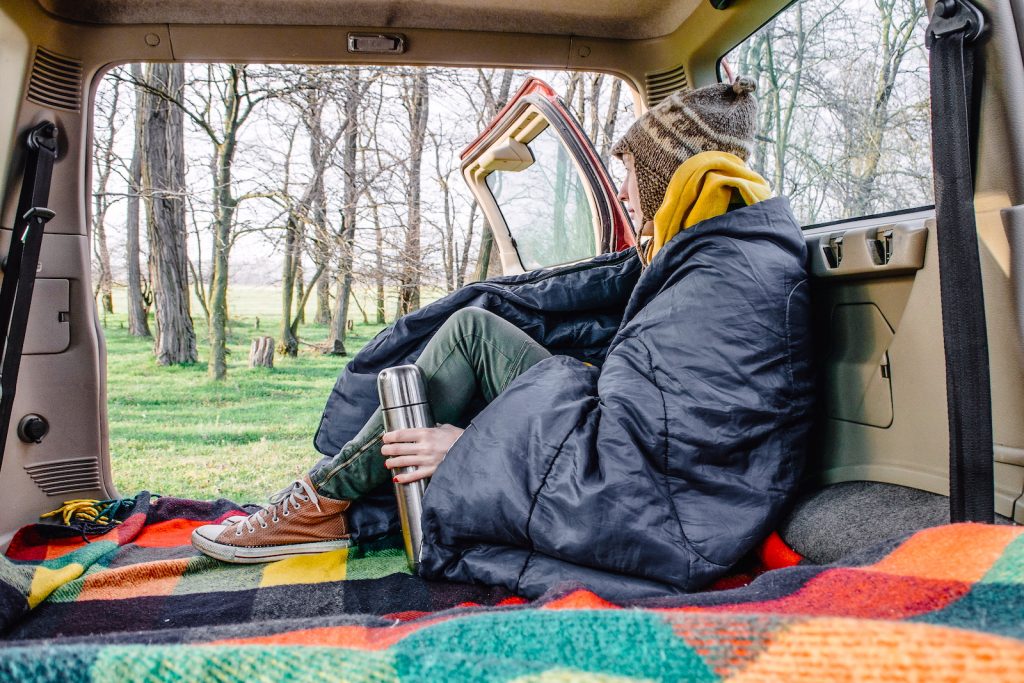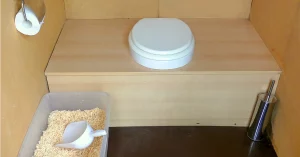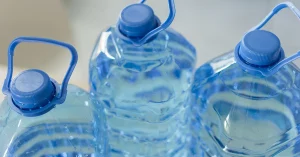If you find yourself in a situation where you are going to be living in your car, there are several steps and precautions that you can take to make sure you are keeping yourself safe and will be able to adequately take care of yourself. There are plenty of benefits to living in your car in an emergency situation, including retaining a sense of independence and the ability to get on the move if a natural disaster or threatening situation arises. We’re here to equip you with the best living in your car hacks and how to tackle staying warm, going unnoticed, and storing food.
1. Water is Essential
Water is the most basic human necessity, so it’s important to take measures to make sure you are properly hydrated while you live in your vehicle. Without water, a human can survive for about three days. Bottled water, as well as a metal water container, are helpful, as the water container will allow you to boil water when you need to. Bottled water is the easiest thing to stock up on, but for long term precautions you’ll need to figure out how to source more water and filter it. Experts say that 90 gallons are a 3 month supply for one person. You’ll also want water purification tablets in case you end up needing to take water from a suspicious source. Chlorine dioxide tablets are helpful in treating water and Potable aqua tablets eliminate harmful bacteria. In extreme emergency situations, rainwater is drinkable after you filter it. A pot that you can use to purify water through boiling is an easy option, as well as a portable filter or filter drinking straw.
2. Staying Warm: Have a Fire Starter Method (and backups)
Recommended methods include a cigarette lighter, hurricane matches, and a Swedish fire steel. A BIC lighter is the most simple, but it’s very dependable. Hurricane matches are windproof and waterproof, so you’ll be ready to bear the elements. Some are also able to light underwater, so you’ll really be prepared for any situation.
3. Staying Warm: Emergency Blankets
Great options are an emergency blanket with flame retardant fabric or a Bivy or Rumpl, a lightweight sleeping bag that retains body heat and is designed to keep you warm. You can also use fire to heat a water bottle and keep it at the bottom of your sleeping bag to heat cold toes. You can also pack the bottom of your sleeping bag with clothes to add an extra layer and soak up any moisture that may be present. A wool blanket is also a good investment, as wool is a natural insulator and will help protect you from any cold air swarming outside of your car. Sunshades are also reflective and insulating that will help you have a longer sleep as well as maintain body heat inside the car. Preppers also recommend that you may want to keep a window open for part of your days to prevent moisture from collecting in the car.
4. Stock a First Aid Kit
You can create a mini pharmacy in your car quite easily. This will help you stay healthy and infection-free if you are to hurt yourself. We recommend that you include: adhesive tape, gauze pads, antibiotic ointment, antiseptic cream, safety pins, aspirin, aloe vera, cotton balls, insect relief pads, bug spray, vaseline, scissors, a needle, tweezers, and a digital thermometer.
5. Strengthen Your First Aid Kit
In the case of a pandemic, your first aid kit can easily be prepared. Recommended extra supplies to include in case of a health crisis are: an antiviral mask, gas mask, goggles, duct tape, gloves, antiseptics, electrolytes, and biohazard bags.
6. Storing Food: Raton Bars & MRE’s
An emergency food ration bar such as Datrex is a survival must-have, as they’re approved for survival at sea as well as during land disasters where regular food is not an option. The box has 18 wrapped 200 calorie bars, and they can be taken with or without water. They also last 5 years in case of a long emergency where food is not readily available. MRE’s are “meals ready to eat”, most commonly known for their use in the Army. These do not need to be heated up and don’t require water, so they are fine if you are in a dire situation. In Survival circles, people also recommend grains to be stored long term in Mylar bags, and that freeze-dried foods can also serve as great options. Freeze-dried foods are also lightweight and won’t get in your way.
7. Storing Food: Foods to Consider
Some foods have longer shelf lives than others, so it’s important to consider what you’ll want to pack with you and what to leave at home. The top food you’ll want to consider hoarding is canned meat, as protein will be necessary. Dehydrated powdered milk is also a good pick, as it is a good source of Calcium and Vitamin D, will help you make sauces, cheese, and butter, and milk prices rise in emergency situations. Drink mixes for coffee and tea are also important, as many of us cannot function without our daily caffeine, and coffee and tea will increase our mental alertness. Stocking up on oils will also be helpful to add calories and fat to your meals, as well as that you will probably need it to cook with. A final emergency food-related item is a survival gill net. While it’s a last resort, it will help you catch small game or fish if you find yourself without food.
8. Storing Food: Hard Candy and Gum
Chewing gum is an unassuming hack for survival in your car. Specifically, chewing gum scientifically reduces stress and lowers cortisol levels. It also increases mental alertness. In fact, Wrigley’s gum was included in US Military rations in WWII! Furthermore, quick sugar in hard candy and dried fruits can provide you with quick pick me up energy for activities.
9. Sanitary Supplies
Sanitary supplies are not just a woman’s concern. You’ll want to designate a particular area for a section containing: wet towels, sanitary pads, biohazard bags, and toilet paper. Women’s sanitary pads can also double for first aid uses.
10. Bathroom Options
You can set up a sanitation station with a bucket and seat, biohazard bags, and toilet paper and wet wipes. You’ll want to have a sewage treatment plan as well as a bacteria enzyme treatment to contain the smells. You can also use kitty litter for this. As far as toilets go, you have a few options. These options include a honey bucket, a luggable loo portable toilet, or infectious waste bags.
11. Going Unnoticed
Solar film can be put on your windows for privacy. A blackout curtain or towel will also help protect you from being seen at night if you have lights on. In terms of parking, you will want to avoid parking in the same spot twice in one week to make sure nobody catches on. You will also want to have a tarp that is large enough to cover your entire car in case you have to camouflage yourself.
12. Creating Power
You can turn the DC current from your vehicle into an AC current so that you can use communication devices and other gadgets that you may need for survival.
13. Prepare for a Flat Tire
Quick Spair can quickly repair a hole in your tire or re-inflate it during emergency situations where you’ve found yourself with a flat but need to be on the move as quickly as possible.
14. A Sump Pump in Case of Flooding
This is easily overlooked, but you’ll be glad that you have it to get you out if you find yourself in a downpour or flood zone.
15. Get a Carbon Monoxide Detector
It’s super important to leave your windows cracked, but adding a detector will help you rest assured that you’re safe. It will beep or flash if something is wrong and the carbon monoxide levels inside the car are too high.
You never know when the need to live out of your car will happen, but rest assured these hacks will help anyone survive a little longer while making your life a little easier in such a small space.




